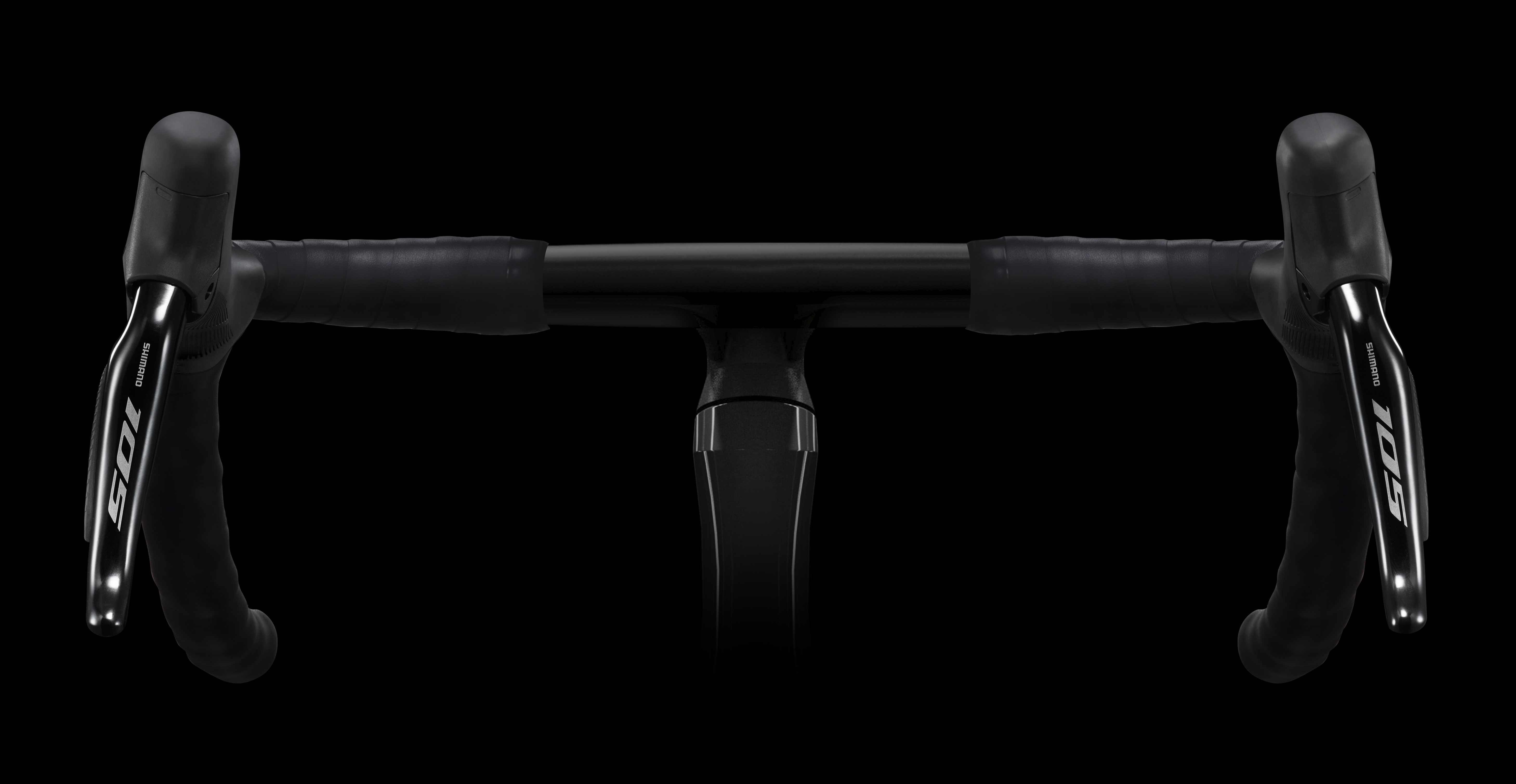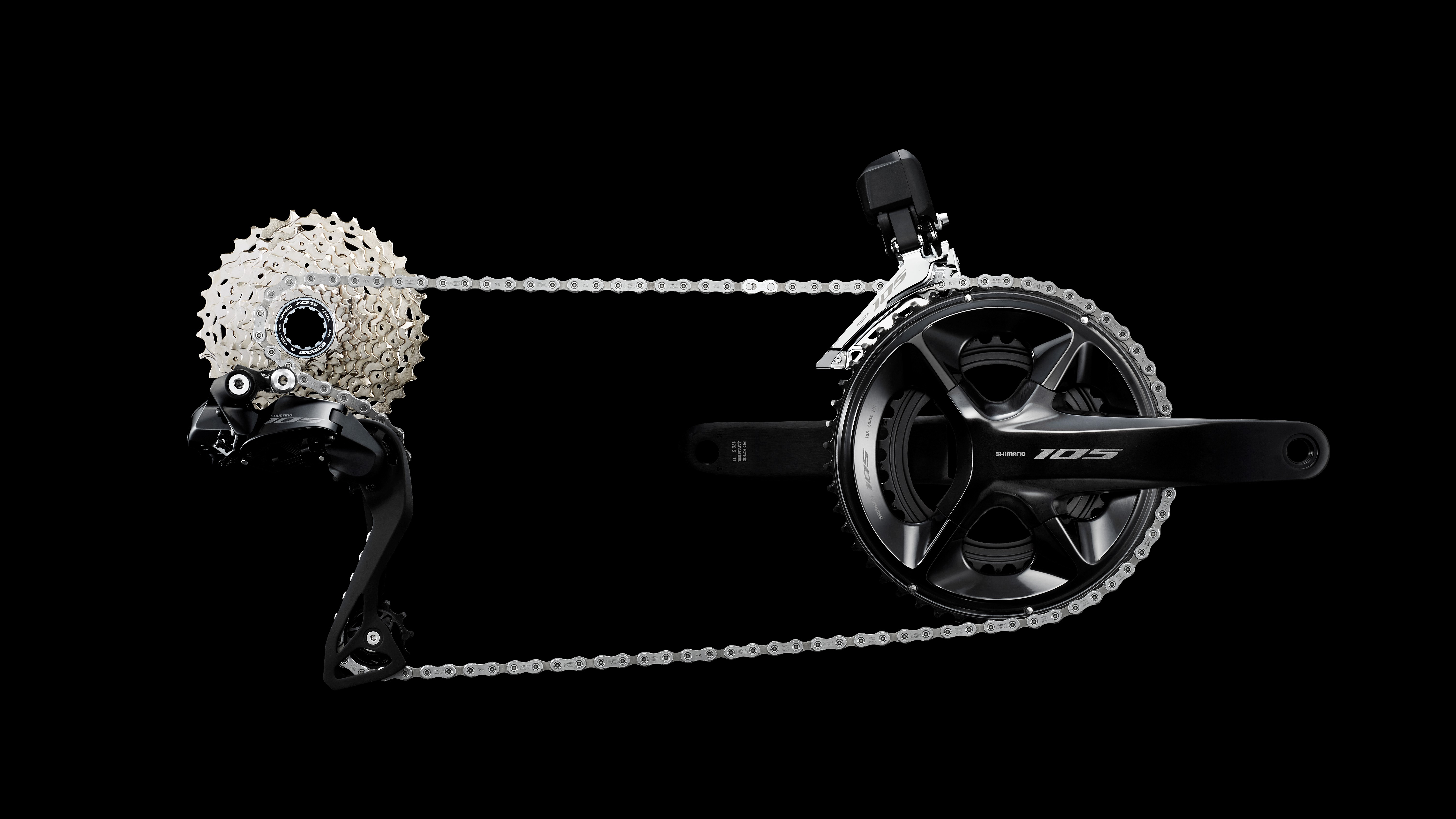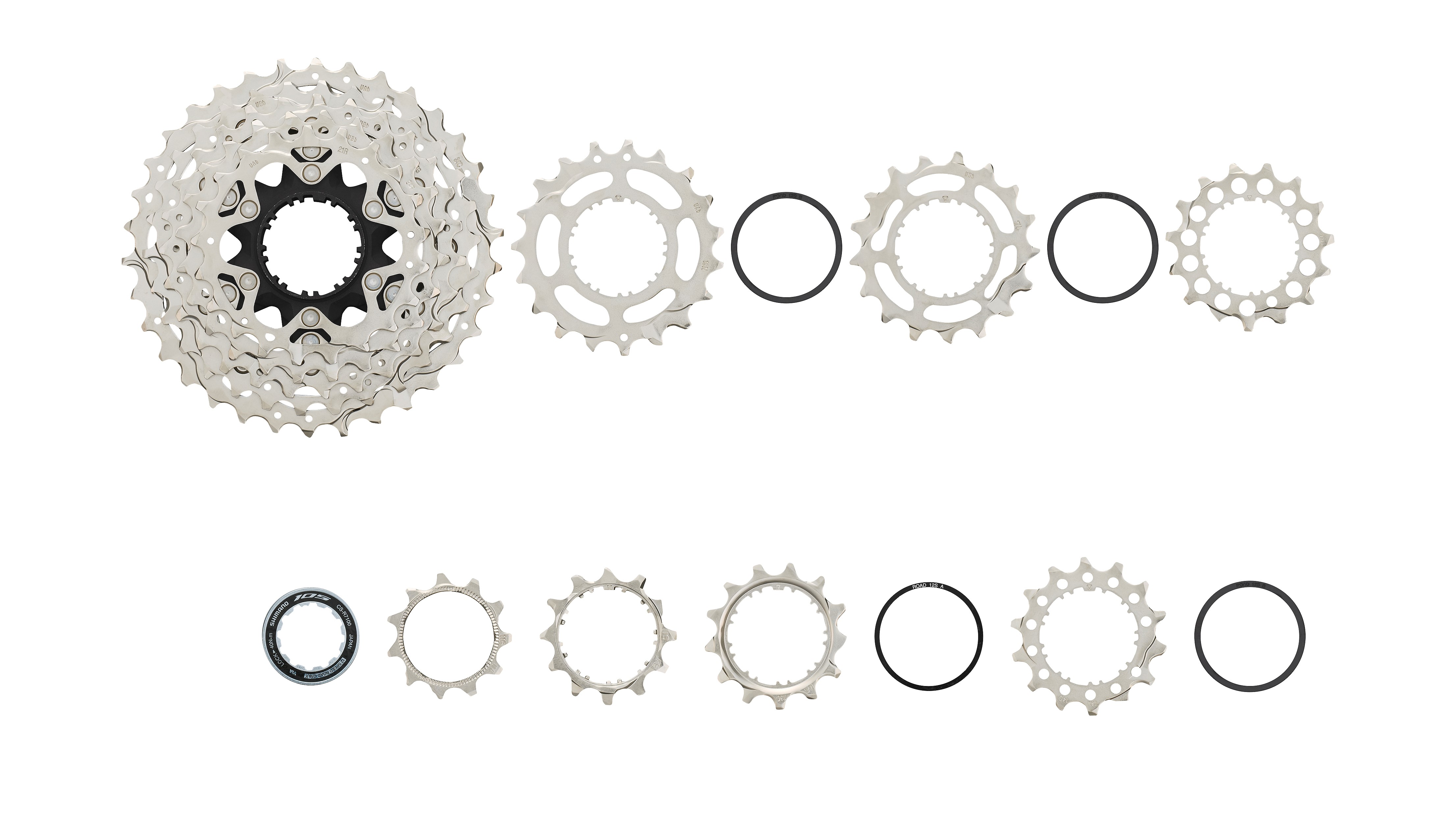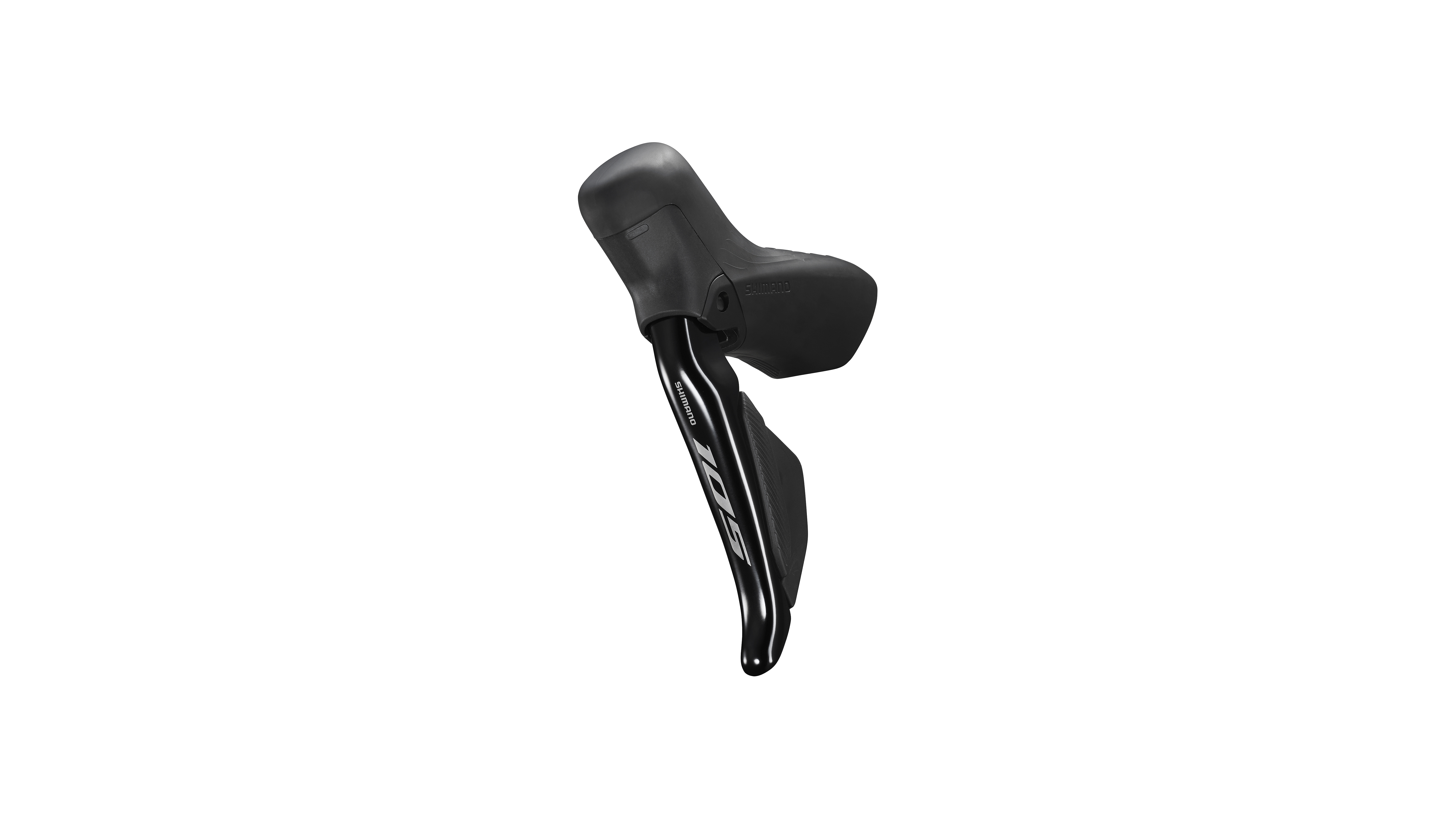Shimano 105 finally goes electric after 40 years
Shimano’s third tier groupset gets Di2 shifting, more sprockets, updated brakes, and a premium pricetag

40 years is a long time in technological terms. The first mobile phone was released just shy of 40 years ago, and the distance between the first powered flight and the moon landings was a mere 66 years. 40 years ago Shimano released its 105 groupset, aimed at ‘sport and urban riders’. It featured clip-on downtube shifters, square taper cranks, and a bottom bracket with caged bearings. Now, following Dura-Ace and Ultegra moving to electronic shifting only, 105 is finally having its Bob Dylan moment and going electric (which won’t be without criticism either).
The upper tiers of road bike groupsets from all the major players are electric now, but Shimano has been lagging behind SRAM in terms of offering electronic shifting at three different levels. With the release of 105 Di2 (nominally R7100) the Japanese componentry giant has, to no great shock, caught up with its American rivals on this front.
What’s new, then? Is it the same old songs but with an amp or a new creative direction? Will the fans of the old records still nod their heads along to Subterranean Homesick Blues? Have I stretched this Bob Dylan metaphor too far? Let’s dive in and see.
Cables are dead
I’m afraid if you want to shift with cables, you’re going to top out at Tiagra: The new 105 is electronic only and utilises the same semi-wireless setup as Ultegra and Dura-Ace, whereby the connection between the shifters and the rear derailleur is wireless, and the rear derailleur communicates with the front by means of a direct cabled connection. This keeps the front end neat and free from wiring, but doesn’t totally eliminate the need for threading cables through hard-to-access parts of the frame.
As per the two higher-tier groupsets, the rear derailleur is the hub of the system, acting as the communications hub and the charging port for the separate battery, which powers both derailleurs.
Given the shifters are essentially getting totally overhauled internals, Shimano has also taken the opportunity to refine the exterior ergonomics too. Gone is the textured upper, replaced by smooth rubber for the most part as per hoods of previous generations, but the underside is scored with a series of channels and the outer of the upper features small ridges, perhaps to improve grip while climbing out of the saddle. The hood shape has a higher peak, too, to provide more grip when in a forearms-horizontal position (and likely to make room for the added components inside, namely the battery and wireless transmitter).
The hoods will also be able to communicate with most head units, though Shimano has recently cut Hammerhead integration so don’t hold your breath on that front.
The latest race content, interviews, features, reviews and expert buying guides, direct to your inbox!

Turn it up to 12
The new 105 groupset will feature 12-speed cassettes that are mercifully backwards compatible with existing Shimano 11sp freehub bodies, meaning you don’t need to buy new wheels. The cassettes come in 11-34 and 11-36 guises, on-trend with Shimano’s push to simplify the gearing options, and are complemented by 50/34 and 52/36 chainsets, as per Ultegra, leaving Dura-Ace the only crankset to offer the larger 54/40 and 53/39 options.

Rim brakes are also dead
The new 105 groupset will be a disc-only affair, which comes as something of a surprise given that both the latest Ultegra and Dura-Ace still offer a rim brake, albeit admittedly ones that haven’t really had any development since their previous iteration. As with cabled shifting, if you want a complete groupset you’ll be confined to Tiagra unless you create a hybrid of a majority-105 groupset with Ultegra/Dura-Ace shifters and rim brakes.
While retrogrouches and weight weenies may mourn the total lack of rim braking, disc brake fans will rejoice in the updates to the 105 anchors. Two new centrelock rotors, featuring Ice Technology Freeza - a triple-layer construction and cooling fins - to improve pad life and keep rotor temperatures down on long descents and by extension reduce rotor deformation and pad rub.
Pad rub, something almost every disc brake user has been subject to, has been addressed at the calliper too with a 10% wider pad gap to allow a little more room for rotors that are slightly warped, or mounting points that haven’t been faced totally accurately.
In a departure from Ultegra and Dura-Ace, the 105 levers don’t feature Servowave, a system from the brand's mountain bike groupsets by which a greater amount of the braking closure is accounted for at the start of the lever stroke to account for the greater pad clearances. It’s unconfirmed at this stage but it may mean the bite point for the 105 levers is slightly closer to the bars than previously.
There is also an improved bleed procedure built in that doesn’t involve removing the calliper from the frame.

A new 105-tier wheelset
What may well fly a little more under the radar is the introduction of a 105 level (though officially non-series) carbon wheelset, nominally the C32 and C46 for climbing and general use respectively.
The rims are 32mm or 46mm deep, with relatively modern 21mm internals and are tubeless ready. They weigh in at 1,502g and 1,610g. No information on the hubs and spokes is forthcoming as yet, but expect to see a cup and cone arrangement as per Shimano standard.

The pricing
Are you sitting down? You might want to if you aren't.
The new Shimano 105 groupset is going to cost £1,730, which is just shy of £1,000 more than the current version. There’s no real way to sugarcoat the fact that this is an enormous leap in price, and it certainly marks something of a sea change in the 105 lineage; a shift from ‘sport and urban’ to that of competition. It poses some questions for the future, particularly around the groupsets on either side; is Tiagra now the enthusiast's choice by default? Is Ultegra now a little bit pointless? Much will depend on how well this latest version performs.
The full price breakdown for the UK is as follows:
- Shifters with callipers - £349.99 / $409.99
- Levers - £249.99
- Callipers - £69.99
- Chainsets - £169.99 /$179.99
- Rear derailleur - £274.99 / $279.99
- Front derailleur - £149.99 /$152.99
- 11-34 cassette - £69.99 / $65.99
- 11-36 cassette - £84.99 / $87.99
- Disc Rotors - £26.99 / $45.99
- 32mm deep front wheel - £479.99
- 32mm deep rear wheel - £519.99
- 46mm deep front wheel - £479.99
- 46mm deep rear wheel - £519.99
International pricing is a little hard to pin down but it's looking like the full groupset will cost around €1729.99 in Europe and the wheelsets will both set you back $1,049.99. Check back in later for any updates.

Will joined the Cyclingnews team as a reviews writer in 2022, having previously written for Cyclist, BikeRadar and Advntr. He’s tried his hand at most cycling disciplines, from the standard mix of road, gravel, and mountain bike, to the more unusual like bike polo and tracklocross. He’s made his own bike frames, covered tech news from the biggest races on the planet, and published countless premium galleries thanks to his excellent photographic eye. Also, given he doesn’t ever ride indoors he’s become a real expert on foul-weather riding gear. His collection of bikes is a real smorgasbord, with everything from vintage-style steel tourers through to superlight flat bar hill climb machines.